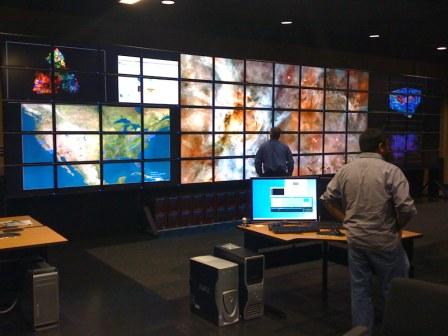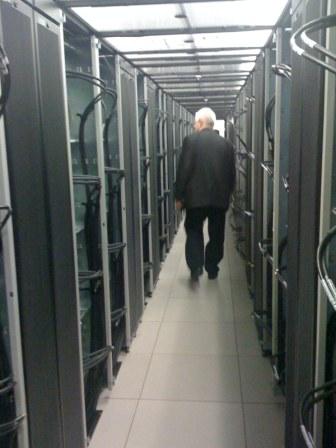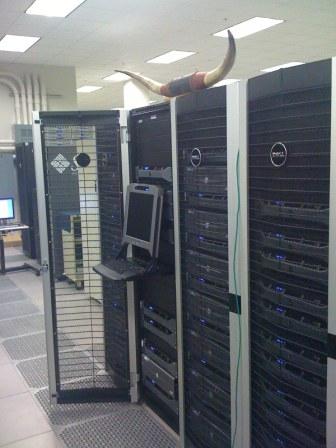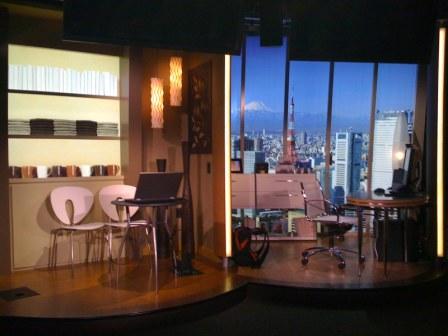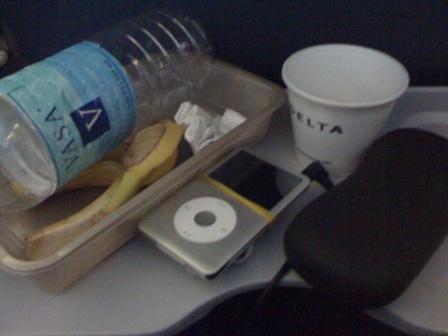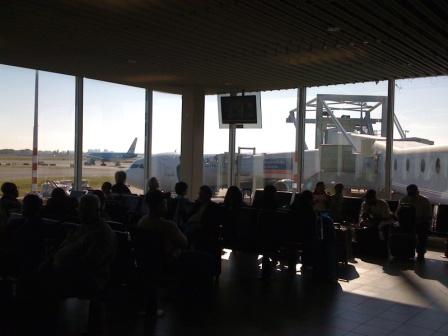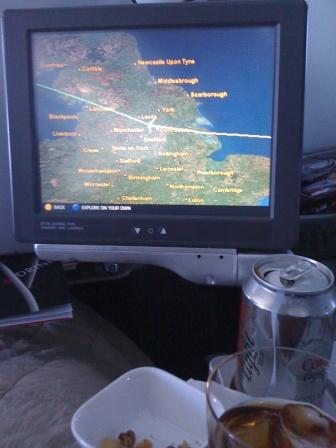Earlier this week Dell announced that they were buying 3APR for $1.15B USD
As a follow up to this, this and this recent posts, I keep getting asked in different forums, venues, via email, telephone calls and in person who will or should Dell buy next, and will Dell buy Brocade, who will buy Brocade or anyone else for that matter.
Ok, first let me say that everything in this post is just a perspective based on openly (e.g. publicly) available information along with some common sense. Thus there is no NDA or confidential insight or tips from some anonymous source named blue horseshoe (remember the movie wall street?).
However I did used to work for a SAN, MAN and WAN company called INRANGE that was a supplier to server and storage vendors as well as partnered with Emulex, Qlogic as well as Adva among others. INRANGE which became OUT of RANGE (that is some SAN humor btw) when it was sold to CNT was then bought by EMC spin off McData (I left before then) which in turn was bought by Brocade. Now does any of that make more qualified than any other arm chair quarterback pundit with a keyboard and pulse to jump into the whom Dell will buy next sweepstakes to I say no.
However, let me use some experience to analyze a few things, then connect some dots. From there, I will leave it up to you to agree, disagree, bet, guess, speculate or wish upon a falling star as to whom Dell might buy, or for that matter, what others may or may not do.
First, since Brocade keeps coming up in conversations, here is a previous post I did on the topic of them being for sale or who might buy them.
I still think that Brocade can survive on their own, granted they need to kick it into gear on the switch (Ethernet, Fibre Channel and FCoE), distance extension, HBA or CNA if you prefer as well as management tools front. Brocade built their business with OEM partnerships via Dell, EMC, HP, HDS, IBM, NetApp and Oracle/Sun among many others not to mention their channel distribution programs.
Thus Brocade needs to leverage those OEMs on a go forward basis. However, that model and channel partner model also gets in the way of Brocade being bought by one of their OEMs. Keep in mind that EMC once owned McData and made a nice profit on that spin off (or spin out) while IBM sold off their networking division to Cisco, now both do good business with their OEM suppliers. Likewise, both leverage multiple suppliers as that is what their partners and customers want (e.g. choice of suppliers).
Now, keep in mind that HP has had their procurve low end Ethernet switches for some time and historically flipped some business (excuse me, partnered) to Cisco for high end Ethernet LAN networking technology. Lets also not forget about HPs recent acquisition of 3COM (read about it here).
Now with Cisco tip toeing into the server market trying to flex its muscles in the small server pool (no offense Cisco or to your faithful followers) HP and other server vendors might be wanting to flip something else at Cisco besides business. Oh oh, I think I hear the Cisco UCS truth squads knocking at the door with large amounts of truth serum (Ok, Im just kidding folks).
Lets get back to HP and 3COM.
IMHO that was partly an opportunity to pick up some additional revenue, partly to grab a brand name that also has ties into the Chinese market. Keep Huawei (here and here) in mind, you know, that sometimes Cisco nemeses networking company who had 2009 revenues of RMB149.1B or $21.8B USD. Now back to H and 3COM, that was also IMHO play to gain access to additional SMB, SOHO, ROBO and consumer market channels for a bargain price. HP is not alone as others have done similar acquisitions in part or in whole to pick up a brand name that also hade partners, channels, products and revenues. For example among many others, EMC and Iomega, Seagate and Maxtor, Symantec and Norton, CA buying, well, I think or hope you get the picture.
Now back to Brocade and Dell.
Why would Dell need Brocade for which they would have to a pay a premium price of $6-7B USD (assume 3 to 3.5x multiplier on revenue) which would get them just under $900M in debt and a couple of billion in annual revenue. Keep in mind that Dell has somewhere in the neighborhood of $9-10B in cash although while Im not an accountant, the financial people tell me they need to maintain their strategic reserves of which such a deal would put a big dent into.
However, there is more to the story which is that revenue would be in jeopardy if the other server and or storage vendors (e.g. EMC, Fujitsu, HP, HDS, IBM, NEC, NetApp, and Oracle/Sun etc) did not like Dell owning one of their suppliers. In other words, unless Cisco really upsets the server vendors which they have been doing to a lesser degree already, why would Dell want to risk a Texas size pile of cash to get a revenue stream that could blow away in a Texas size hurricane or dust storm?
Granted if Dell could talk Michael Klayko (Brocades CEO) and board as well as other investors into a low ball offer the math might virtually work. However that is also doubtful knowing that Klayko also knows Joe Tucci of EMC who knows how to drive a deal or bargain. Thus, I do not see Brocade rolling over in desperation to sell them at a discount as much as some might want you to believe that they need to do.
Thus, while anything is possible, I do not see Dell buying Brocade except for one possible scenario which could result in a bidding war not to mention utter industry chaos.
That scenario is what I refer to as MAD which is a Mutual Assured Destruction situation. In other words, an all out war or ensuing instability that throws existing OEMs, partners and business into chaos (keep in mind however in chaos or confusion there is opportunity). The MAD scenario could be triggered by Cisco finally getting truly and really serious about servers. Granted Cisco is doing their best to test their partners, OEMs and even customers as too how much they will tolerate in terms of entering the server market.
Im not convinced they are ready to be number one, two or three let alone four or five. After all, my numbers may be off, however best I can tell the number of Cisco blade servers is measured in thousands or best case a few ten thousand since its launch. By comparison, how many thousands of servers do Cisco OEMs Dell, HP, IBM, Oracle among others ship per week or month? In other words, Cisco to really get serious would need to ramp up that server business by several factors of ten, a move that would not sit well (even worse than now) with their major OEM partners.
Thus, if Cisco were to get serious and want to move up into the top two or three spot of the server market, something people always tell me that Cisco feels they have to be in a top market spot, they step all over their OEMs. This in turn would set off the MAD scenario mentioned above, kind of like a scene out of war games, perhaps what you are seeing with some of the early Cisco posturing. Sure Cisco made some moves with their UCS and their EMC alliances as well as dancing with whoever buys them a drink and sure HP bought 3COM which I guess could be seen as a warning shot if you like. Sure Cisco is the 800 lb guerrilla when compared to the networking vendors except do not forget about Huawei (read more here).
Thus for the time being, I expect Cisco to keep making noise, testing the waters, pushing its OEMs and partners. Perhaps Cisco also does some arms treaties in the form of marketing alliances as it continues to push its FCoE and unified compute initiatives. Sure they will keep pushing Virtual Desktop Initiatives (VDI) and anything else that can generate network traffic so they can support those needs. However, also keep in mind that VMwares biggest platform deployment (e.g. servers) customers or partners are HP and Dell in no particular order (I will let you rank them depending on whose data you choose).
Oh no, I have to stop now as I wanted this to be a short post.
So what does this have to do with Dell and Brocade?
Simple, why would Dell want to go down that path if they do not have to?
As to who Dell should buy, real quickly, how about a data protection (security, backup, restore, BC, DR) company or a data management or a desktop management company, how about one that fits all of those like Symantec which from a revenue standpoint is about three times that of Brocade.
Heck, if you think Dell could afford Brocade, then why not a Symantec which might actually be worth more in pieces than as a whole. Dell could sell off what they do not need or want or make that part of a deal or keep it all! As for others, how Dell buying a low end consumer, prosumer, SOHO storage play like Drobo or Snap among others.
Ok, I have to wrap up for now.
Talk to you all soon either here, or in one of the many other different venues or social media as well as traditional mediums as this story is far from being done.
Whats is your take?
Cheers gs
Greg Schulz – Author The Green and Virtual Data Center (CRC) and Resilient Storage Networks (Elsevier)
twitter @storageio
Here are some links to read more about the above topics and themes
- Could Huawei buy Brocade?
- Acadia VCE: VMware + Cisco + EMC = Virtual Computing Environment
- Did HP respond to EMC and Cisco VCE with Microsoft HyperV bundle?
- HP Buys one of the seven networking dwarfs and gets a bargain
- Industry Trends and Perspectives: Converged Networking and IO Virtualization (IOV)
- I/O, I/O, Its off to Virtual Work and VMworld I Go (or went)
- Back to school shopping: Dude, Dell Digests 3PAR Disk storage
- Data footprint reduction (Part 1): Life beyond dedupe and changing data lifecycles
- Data footprint reduction (Part 2): Dell, IBM, Ocarina and Storwize
Ok, nuff said.
Cheers gs
Greg Schulz – Author Cloud and Virtual Data Storage Networking (CRC Press), The Green and Virtual Data Center (CRC Press) and Resilient Storage Networks (Elsevier)
twitter @storageio
All Comments, (C) and (TM) belong to their owners/posters, Other content (C) Copyright 2006-2024 Server StorageIO and UnlimitedIO LLC All Rights Reserved















